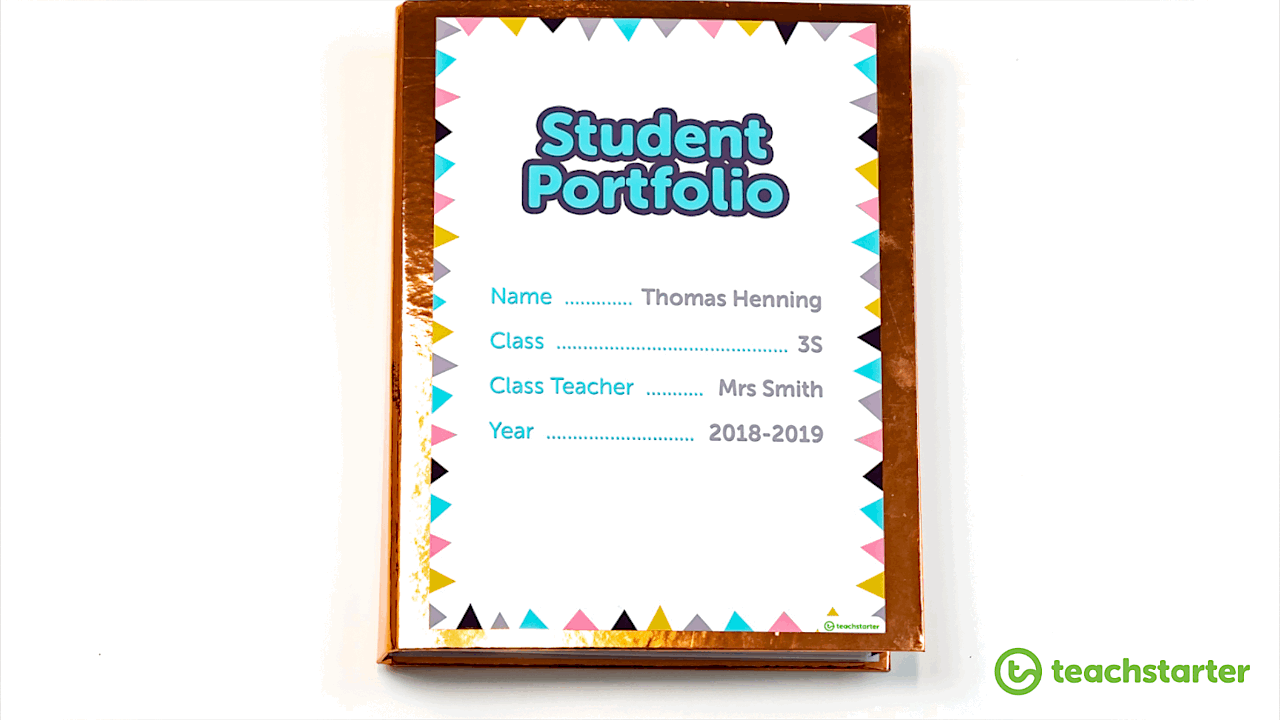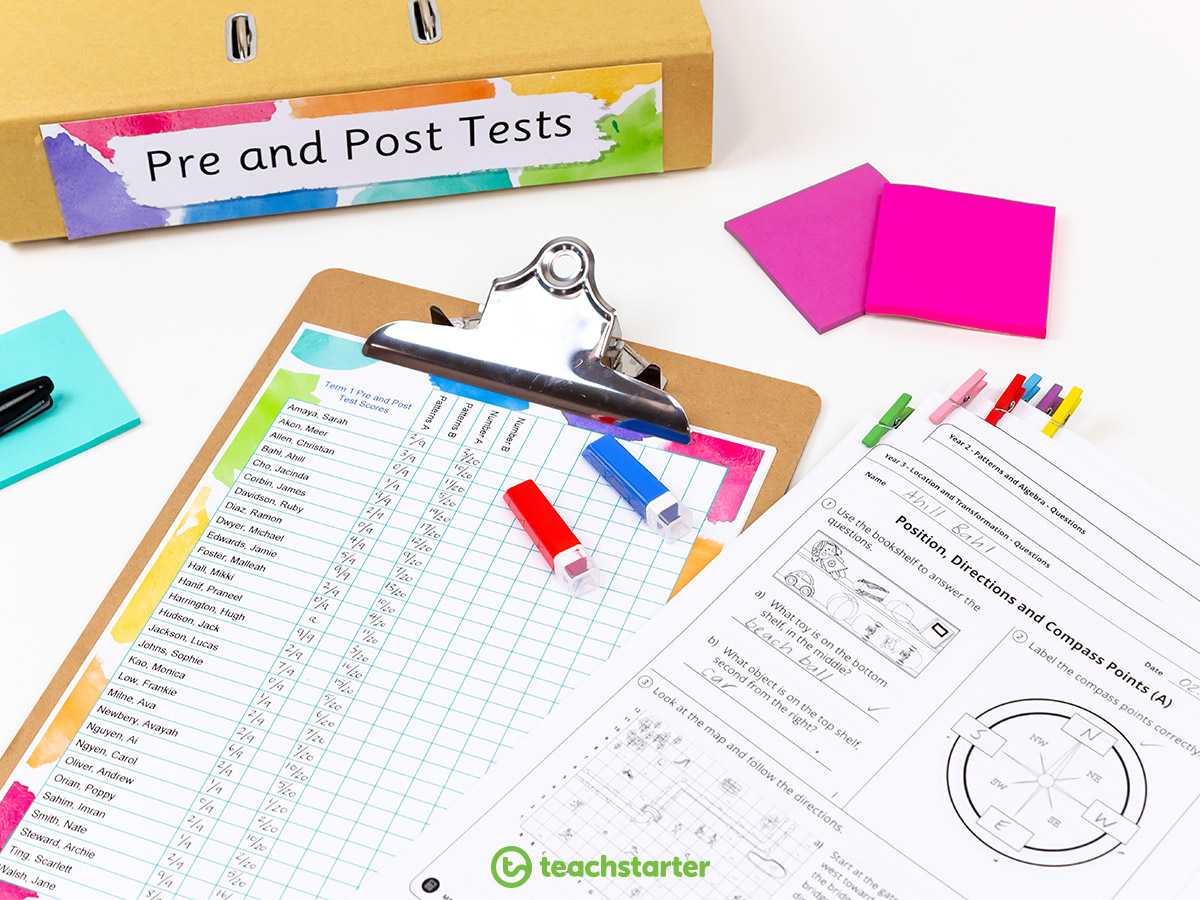There are many benefits to monitoring student progress on an ongoing basis in the classroom. Regular formal and informal assessments provide teachers with valuable information on the progress and achievements of their students. Not only this, but monitoring student progress also gives teachers the opportunity to reflect on their own teaching and assess the impact of the instructional strategies they use.

This blog outlines four benefits of monitoring student progress, with links to helpful resources that will assist you in your own classroom.
What Are the Benefits of Monitoring Student Progress?
#1 Collecting Useful Data
Carrying out regular assessments and collecting student samples of work is a useful way of gathering informative student performance data.
This data is helpful when monitoring the progress of individual students across a range of learning areas, as well as tracking their achievement throughout the year. The data can be used to identify where a student is placed in relation to their personal learning goals, the other students in the class or other targeted benchmarks. You can collate this in a personal filing system, or why not create a student portfolio?
A student portfolio also has the added benefit of helping a student see their own learning journey and enables work to be passed on to their next teacher when the year ends. For more information on student portfolios, read Ali’s blog The Student Portfolio | Hints and Tips for Teacher Handover.
For a more broad view, you can consolidate your whole class’s data in one wall in your office. Colour code levels of understanding to make it easy to see where further work is needed.
Did you know, whole school data walls are now commonly being displayed in staff rooms and offices?
These are a great visual way to inform teachers of the academic progress of each student in the school. Information collected from classroom assessments and work samples is displayed on these data walls, creating a whole school approach for the responsibility of monitoring student progress.
#2 Improving Teacher Instruction
One great benefit of monitoring student progress is that it allows the teacher to evaluate the effectiveness of their own teaching. If the majority of the class is finding it difficult to understand or demonstrate a specific objective, it may not be the ability of the students that is the issue.
You may need to re-evaluate the delivery method through which the concept is being taught.
To do this, it is especially important for teachers to assess their own instructional strategies to see if they are working.
A collection of work samples and pre and post tests may indicate that there is a need for the teacher to adjust their instructional strategies to better meet the needs of the students. At times, the need to re-teach a specific lesson may be required.
We have a number of pre and post test resources for this very purpose, however any simple literacy or numeracy test can be undertaken before and after teaching content.
Monitoring student progress can help teachers to make more informed instructional decisions and change their teaching style to improve the quality of their teaching.
#3 Ensuring Achievement for Every Student
Monitoring student progress on a regular basis also enables the teacher to analyse a student’s current performance level for a specific skill.
As a result, teachers can provide students with assistance in achieving their personal academic goals. With information from assessments and samples of work, the teacher can work with the student to establish achievable learning goals and help each student to stay on track. With ongoing monitoring of the students, teachers can establish an achievable and individual rate of progress for each student, or conversely intervene when required.
We have a number of learning goals resources to help students and teachers stay on track in a range of key learning areas:
[resource:80433][resource:80676][resource:1614606][resource:2697318]
Teachers can also use the information collected to provide students with valuable feedback. With this feedback, students gain greater personal responsibility for their own learning and become more aware of their own academic performance.
#4 Identifying Students At Risk
Lastly, an important benefit of ongoing monitoring of student progress in the classroom is that the teacher is able to identify students at risk and provide intervention when required. Additional support and instruction can be given to at-risk students and areas that need to be retaught or taught differently can be identified. Monitoring all students on a regular basis ensures that no student ‘slips through the gap’. It also highlights those students that require extension and more challenging tasks. Using resources such as our editable class lists makes this an easy page to include in your planner.
There are so many more benefits of monitoring student progress, we couldn’t possibly list them all!
Here are some of our favourite resources to get you going.
[resource:147529][resource:2718970][resource:2701154][resource:2694646]
[resource:540833][resource:2700342][resource:2703126][resource:2704374]









Comments